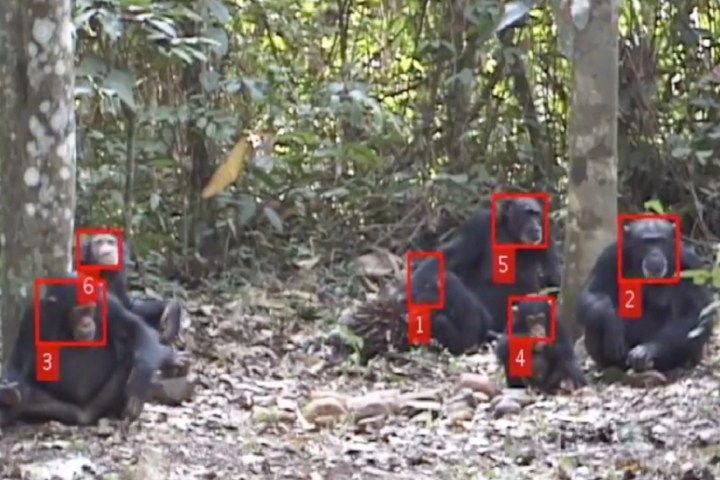
From unlocking smartphones to spotting criminals in crowds, there’s no shortage of reminders that facial recognition technology has gotten pretty darn good. Among humans, that is. But now researchers from the U.K.’s University of Oxford and Japan’s Kyoto University want to expand the tech’s capabilities — by making a facial recognition system that works with chimpanzees, too.
The A.I. system showcased an impressive recognition accuracy level of 92.5%. It was able to correctly identify a chimp’s sex 96.2% of the time. In a competition against humans, the system was 84% accurate when asked to identify chimps in 100 random still images. Humans managed precisely half as well, guessing the chimps’ identity correctly just 42% of the time. But the real improvement was time. Humans took 55 minutes to complete the task, whereas machines took just 30 seconds.
As much as we’d love for this to be designed to let chimps use Face ID on the iPhone, it’s actually intended to help researchers who are tracking chimpanzees in the wild. Rather than having to manually tag animals, or recognize them in some other way, such tools could make it easier to study animals in their natural habitats.
“For my Ph.D. research, I have access to a large video archive of chimpanzees from Guinea in West Africa since 1988,” Dan Schofield, one of the researchers on the project, told Digital Trends. “This is a unique opportunity to study several generations of chimpanzees, but manually extracting information from over a thousand hours of footage is overwhelming and would be extremely time-consuming. To solve this problem we developed a face recognition model which can be applied directly to raw video footage to automatically detect, track, and recognize individuals in time and space. We used the output of this system to generate social networks to examine the social interactions of the group over many years. This can save countless hours and resources for researchers and conservationists.”
The A.I. employs a deep learning neural network, trained on 10 million face images from 23 individuals in more than 50 hours of footage. This kind of dataset made it possible to create an accurate A.I. system. However, Schofield said that’s not always information that’s readily available.
“There are now large open-source datasets of human faces to train deep learning models, but this is not the case for other species,” he said. “For example, recognizing identities of chimpanzees is a challenge for the untrained human eye, and requires extensive training and expert knowledge. We provided the framework and tools to help researchers quickly label and analyze their own datasets. We hope this will drive the development of new recognition systems for other species.”
A paper describing the research was recently published in the journal Science Advances.


